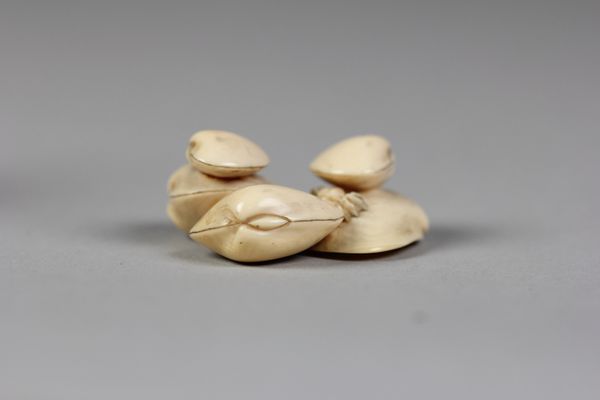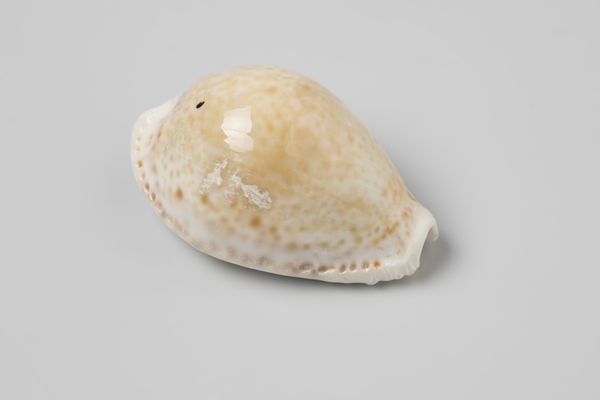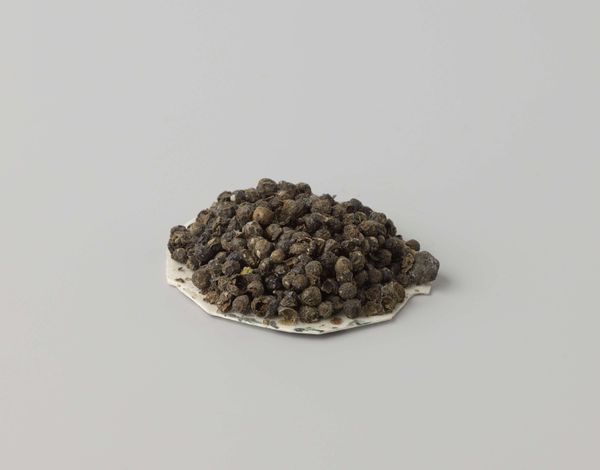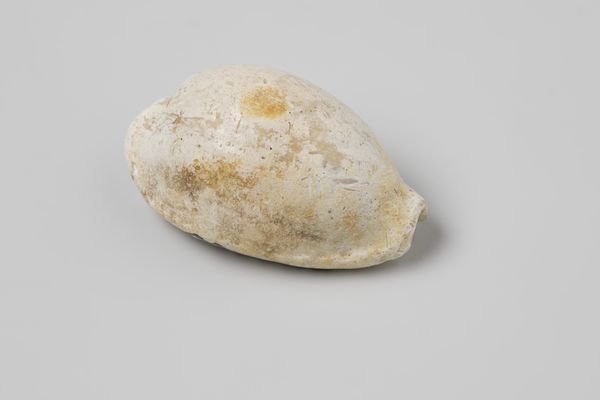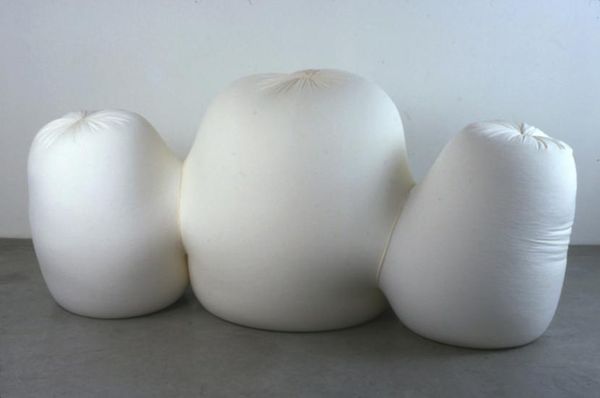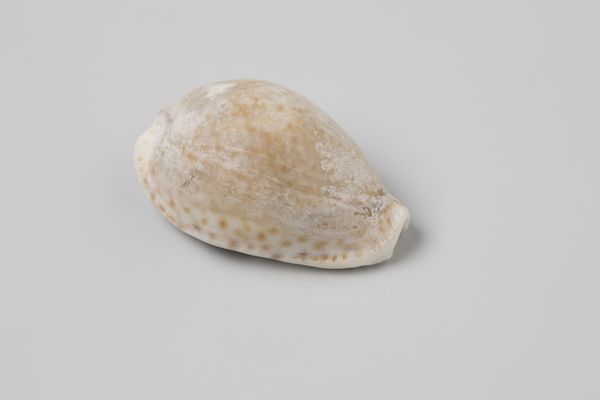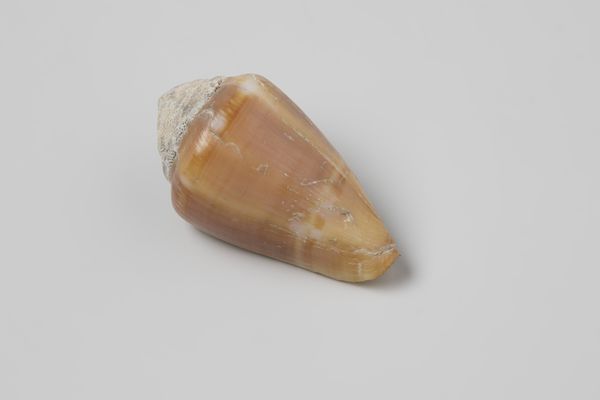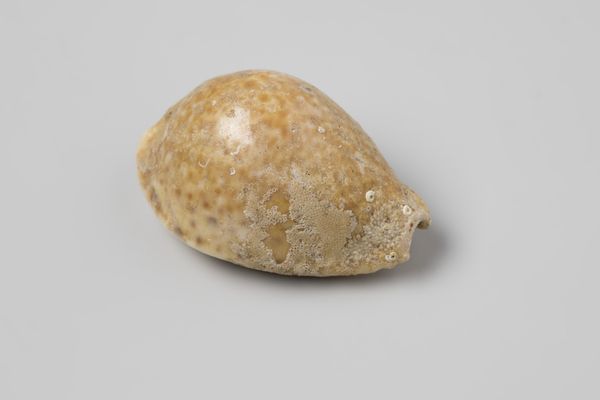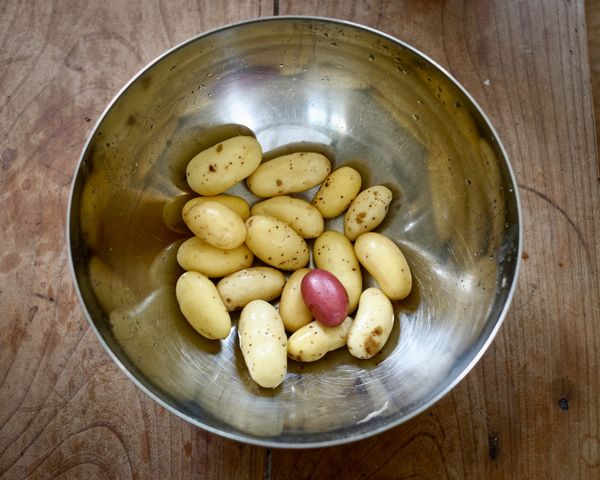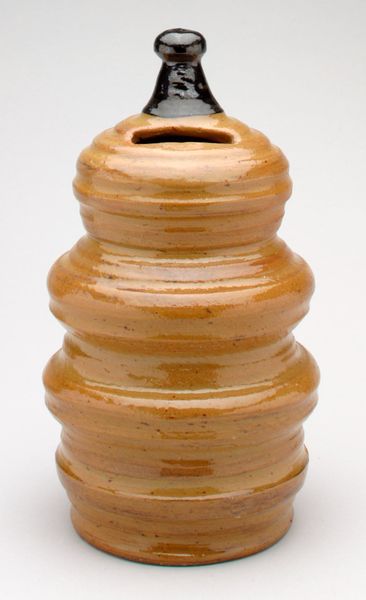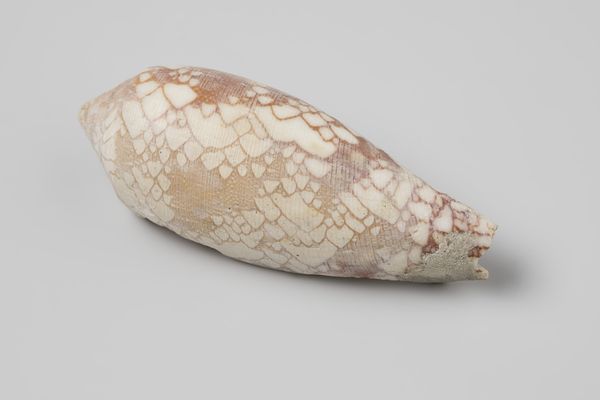
ceramic, sculpture, ivory
#
asian-art
#
ceramic
#
japan
#
sculpture
#
ceramic
#
ivory
Dimensions: 1 x 1 7/16 x 1 7/16in. (2.5 x 3.7 x 3.7cm)
Copyright: Public Domain
Curator: The work before us, dating from the 19th century, is titled "Pile of Eight Ginkgo Nuts," attributed to Kiyokatsu. It’s part of our collection of Asian art and made of ivory. What do you make of it at first glance? Editor: Well, my immediate impression is one of subdued opulence. The color, while restrained, hints at a quiet luxury. The repetition of forms creates a simple yet satisfying pattern. It looks edible. Curator: Precisely. The simple arrangement directs the eye around the slight variations within this cluster of near-identical forms, which establishes internal echoes across their smooth surfaces. It highlights their shared spherical geometry but also sets into relief subtle asymmetries that suggest organic development and artistic handcrafting. Editor: Absolutely. Thinking about ivory and its use during this period, particularly in Japan, shifts my reading. Ivory objects, or netsuke such as this, often served as luxury items, reflections of wealth, status, and the intricate craftsmanship prized by the upper classes. Did the depiction of ginkgo nuts hold a particular significance? Curator: Yes, indeed. Ginkgo nuts are themselves appreciated within Japanese culture. Ginkgo trees, known for their resilience, represent longevity, hope, and a link to the past, since they are something of a "living fossil". Each individual nut then represents a wish or prayer. Consider what a dense convergence of symbol and craft. Editor: That contextual overlay deeply enriches how one perceives the materiality of the piece too. The smooth ivory emulating the natural form now points towards specific values – prosperity and generational stability for instance. So what initially appeared understated begins to vibrate with intent. I almost wonder what handling one of these forms must have felt like for the person who owned it, given how imbued it was with meaning and hope. Curator: I agree completely. Its compact size draws one in to see its details closely. Each ginkgo carved so seamlessly contributes to a composition in aggregate far grander than its individual pieces might suggest. What began as botanical study grows into social commentary by virtue of its material execution. Editor: So ultimately the sculpture encapsulates an entire micro-society, or rather, a desired outcome for that society within a cluster of replicated hopes. Looking again, what initially seemed passively beautiful turns quite assertive! Curator: Precisely. And it’s in considering these interwoven formal qualities alongside the socio-cultural context that one begins truly to appreciate Kiyokatsu's mastery.
Comments
No comments
Be the first to comment and join the conversation on the ultimate creative platform.
